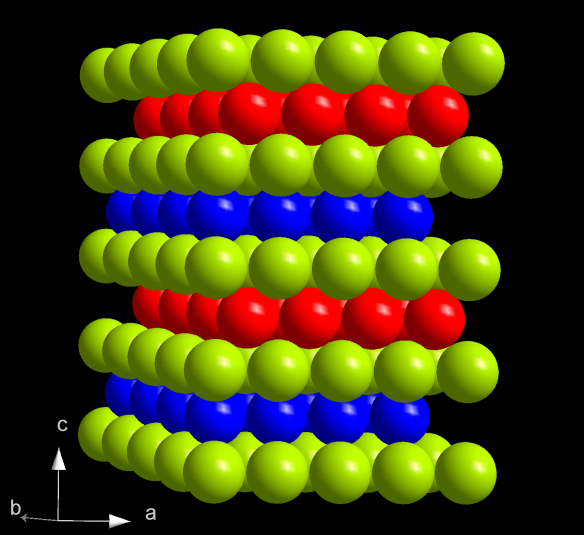Madam Curie – one of her elements: Curium
What does it look like?

The double hexagonal close packed structure of Curium.
What is it?
Today would have been Marie Curie's 147th Birthday. It's also medical physics day in honour of the fact that her discoveries led to the the way we treat many types of cancer with radiation.
Marie Curie's accolades are well known. Amongst other things, she was the first person to win both a chemistry and physics Nobel prize. We've actually already covered the curious crystal structure of one of the elements she discovered, Polonium, so instead today we thought we'd cover the element named after her and her husband, Curium.
Curium was first intentionally synthesised in 1944, using a cyclotron at the University of California. It's the heaviest of the actinide elements that you can make milligrams of; anything heavier only exists for long enough for a few atoms at a time to exist. Curium is thought to form a couple of crystal structures. The one that we've shown here is an element structure that we haven't featured on crystallography 365 yet, a double hexagonally closed packed structure. This means that it forms a layered structure: one repeats (the yellow layer in the picture) and in between that two other types of layer (red and blue) form.
Where did the structure come from?
Nobody has ever really made enough curium to do a diffraction study of it, so the structure has been determined from ab initio theory methods by Milman et al. in 2003. You can read more about how they did this in their paper.






